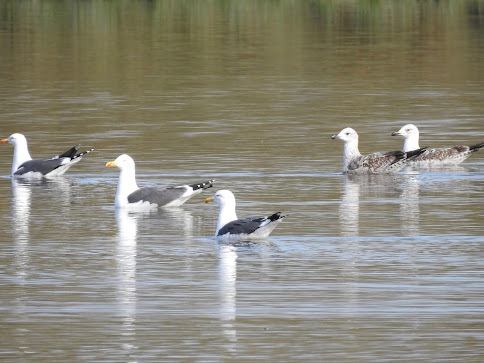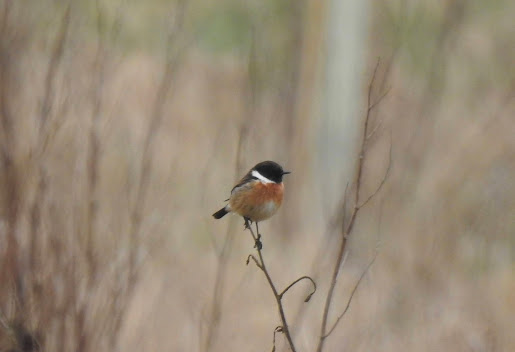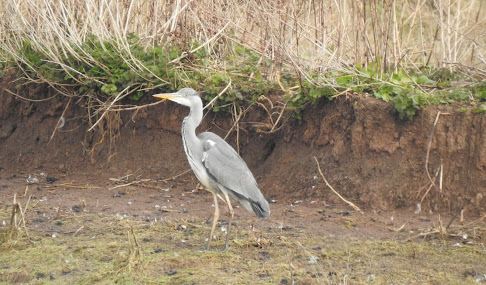A warm sunny morning with hardly a breath of wind. I opened my car door and heard the gentle refrain of my first Willow Warbler of the year. Spring has arrived. The warbler was very mobile and I only saw it once in a 15 minute period when it always seemed to be singing three trees further on! Eventually I returned to get my stuff from the car and looked up to see it fly past, give a clear "hooeet" call and then dash off down a hedge before being chased by another warbler (presumably a Chiffchaff). It continued away, and I never saw it again.
Further encouraging signs were four Blackcaps (including a female), and 14 Chiffchaffs as I walked around the site. The star attractions were waiting for me at the flash field, a pair of Avocets. They also seemed to fly off before I could get my camera out, but I found them again back on the nearest flash.
 |
| Avocets |
They were sharing the flashes with 18 Teal, seven Mallard, three Shelducks, four Lapwings, two Black-headed Gulls, and five Lesser Black-backed Gulls. It seems strange that no other waders have turned up yet. (In fact Dave twitched the Avocets during the afternoon and as well as confirming they were still present, also found two Little Ringed Plovers lurking in the grass surrounding the furthest flash, flushed a Snipe from the pool field marsh, and counted 19 Teal).
 |
| Lesser Black-backed Gulls |
The only disappointment on a thoroughly uplifting morning was that there is still no Wheatear habitat. I photographed this Skylark peeking over the weeds in the field which used to be ploughed each year.
 |
| Skylark |
But Skylarks are nice birds too. A single Yellowhammer flew high overhead, a further reminder of times past.
Bees, bee-flies, and butterflies were well in evidence. I saw four species of the latter; Brimstone (six), Comma, Small Tortoiseshells, and Peacocks.
 |
| Peacock |
The Peacock experienced a terrible season last year, so I'd like to think that the three I saw this morning is a good portent.
The moth trap will be out tonight, to be continued...
36 moths attracted to the garden as follows:



























